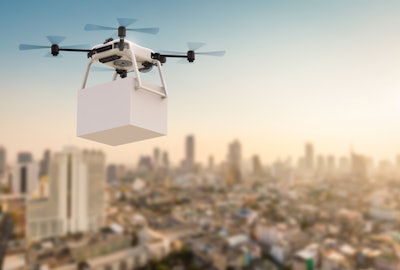
Delivery drones are expected to make a disruptive impact on the U.S. logistics industry by 2028, according to Tech.co’s latest survey data.
The survey findings show that 17% of U.S. logistics businesses say delivery drones will have the most disruptive impact in the next 2-3 years.
“As workforce shortages continue to plague the transport and shipping sector, it seems that a significant number of logistics professionals see a solution on the horizon in the form of delivery drones, with a small percentage of those we surveyed already using them,” says Tech.co’s content manager, Aaron Drapkin. “While AI-powered route optimization and vehicle maintenance tools are already helping businesses become incrementally more efficient, technology like delivery drones could positively transform last-mile delivery in particular, which is notoriously complex and costly. But there’s a reason why drone delivery services haven’t taken off en masse just yet.”
Key takeaways:
· Workforce shortages are the single biggest pain point for nearly a quarter (24%) of logistics businesses.
· Delivery drones could play a valuable role in alleviating the stress of driver shortages on the U.S. supply chain.
· 7% of U.S. logistics businesses are already using delivery drones.
“Many businesses will be buoyed, then, by the Trump administration’s decision to do away with some of the red tape that stops companies from flying drones out of visual lines of sight. Truly transformative technology rarely arrives without teething problems and the transport industry needs solutions fast,” says Drapkin. “The appetite for delivery drones is certainly growing, and while there are significant hurdles to overcome before we all start installing helipads in our backyards, workforce shortages reaching critical levels prompt the all-hands-on-deck approach needed to overcome them.”
















![Pros To Know 2026 [color]](https://img.sdcexec.com/mindful/acbm/workspaces/default/uploads/2025/08/prostoknow-2026-color.mduFvhpgMk.png?ar=16%3A9&auto=format%2Ccompress&bg=fff&fill-color=fff&fit=fill&h=135&q=70&w=240)



